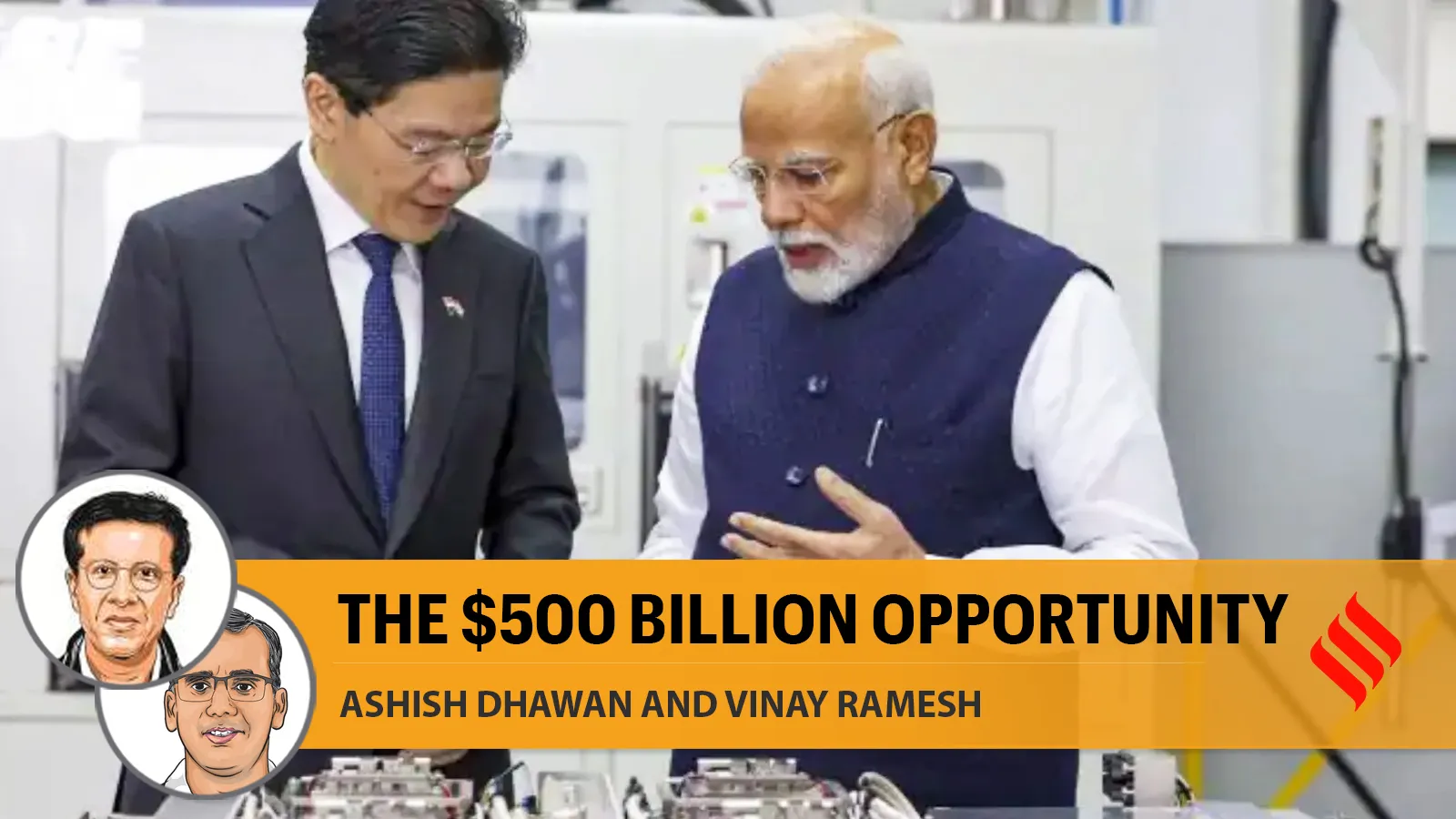Last month, Prime Minister Narendra Modi announced a $500 billion (Rs 4.20 lakh crore) target for electronics manufacturing in India by 2030. We must applaud and support the ambition — growth in electronics manufacturing will help solve India’s jobs challenge. For example, the Apple ecosystem alone exports around $14 billion (Rs 1.17 lakh crore) and employs 1.6 lakh people.
At the same time, we must recognise that the ambition is audacious — India’s entire manufacturing output in 2023-24 was roughly $660 billion (Rs 55.4 lakh crore). Meeting the target would mean sustaining growth rates few countries have achieved and will require equally audacious reform.
The government already realises that much of this growth will have to be export-led, as statements by the minister of electronics and information technology have made clear. However, while achieving export competitiveness at scale is the right strategy, executing it is no mean task. How can we do it, especially given our legacy ecosystem that has proven so resistant to reform?
The answer lies in the history of manufacturing growth, which has been a story of regional clusters. The electronics industry is no different. From its beginnings in Silicon Valley to its later centres — Taiwan, Japan, South Korea and then more recently Shenzhen in China and Northern key economic region (NKER) in Vietnam — competitive regional clusters have driven growth in electronics.
In India too, clusters in regions like Sriperumbudur in Tamil Nadu and Noida in Uttar Pradesh have recently been growing fast, and account for nearly 50 per cent of our electronics exports. To sustain and accelerate growth in electronics, we need deep and ambitious region-led reform that can create large, globally competitive electronics manufacturing regions.
Studying successful regions around the world reveals three key factors for success — large size with anchor investors, customised regulations to suit export activity and devolution of administrative power down to the industrial park level. We go into some detail on each of these to explain why a new policy should incorporate these factors.
Large size is essential for competitiveness. Shenzhen, a Chinese special region, which alone exports around $350 billion, is 2,000 sq km, while the largest Indian electronics cluster, under the government’s Electronics Manufacturing Cluster (EMC) scheme, is 2.5 sq km. Large size helps in co-locating suppliers and buyers, which is important for ecosystem competitiveness. It also helps invest in large, efficient shared industrial infrastructure like effluent plants and testing facilities that lower costs for everyone.
Electronics factories can employ thousands — the Foxconn factory in Sriperumbudur has 21,000 workers — and it is important to house workers close to factories. Large zones make it possible to have social infrastructure like worker housing, schools, hospitals and recreation facilities.
Given the political difficulties and prohibitive costs of acquiring large tracts of land, it will be better to develop around existing electronics manufacturing regions. This would mean declaring a large — say 300 sq km — special region incorporating existing factories and new parks. Within the zones, the focus needs to be on attracting lead brands and their partners as anchor investors and they can, in turn, attract their downstream partners.
To give a sense of the importance of scale, Shenzhen (2,000 sq km) generates manufacturing employment for 4.6 million workers and exports of more than $300 billion. By contrast, Mundra EMC is just 2.5 sq km and employs 5,000 workers.
Large size and anchor investors alone will not be enough. These regions need a regulatory environment that is conducive to exports and comparable to the best manufacturing regions. The priority would be pro-employment labour laws — allowing longer shifts, globally competitive over-time rules and removing restrictions on employing women, who make up a majority of electronics workers.
The other key area of customised regulation is taxation and tariffs. Electronics manufacturing requires movement of lakhs of components with designs changing frequently. Extremely specialised supply chain participants mean that much of this movement is cross-border, even in countries with much greater value add. Thus, all our competitors like Vietnam, China, etc., already allow foreign vendors or brands to manage component inventory seamlessly across borders without tax or tariff implications. This has been a big part of their success.
However, current Indian tax laws make inventory management by foreign entities unviable, making manufacturing needlessly complex. Interestingly, the required tax exceptions have been allowed previously in “national interest” for the Oil & Gas industry. Electronics today is no less strategic.
Corporate tax and GST rates too need to be benchmarked against those in Vietnam and China to attract large global players. Finally, Indian factories are encumbered by numerous laws governing buildings, green cover, pollution norms, etc., that are globally uncompetitive. EMC authorities need to be able to relax these within the region.
To ensure responsive governance, central and state governments also need to devolve requisite powers to the EMC authority so that it can provide all necessary approvals and permissions. Global examples have also shown that PPP models that attract private players to manage the region and build plug and play parks are a good way of speedy and high-quality execution.
The current government has shown the willingness to enable such a differentially regulated zone for financial services in GIFT city, and needs to do the same for electronics manufacturing regions. Reforming India’s regulatory cholesterol across the country is a long and arduous road, but we can start by reforming the regulatory environment in geographically limited areas.
Without thriving manufacturing regions, the ambitious goal set by the PM will remain just another manufacturing target we have no hope of achieving.
Dhawan is founder and CEO of The Convergence Foundation and Ramesh is COO of Foundation for Economic Development. Views are personal



